#southeast los angeles
Text
A NEW SOURCE FOR NEWS IN L.A.
Mariah Castañeda is the co-founder of Los Angeles Public Press, “an independent, non-profit newsroom advocating for a better Los Angeles.” In this chat, we discuss her upbringing through Adelanto, California and Huntington Park, as well as her hosting work for one of the bests podcasts in recent memory for L.A., The Sellout. Mariah also tells us about key goals for the L.A. Public Press as a…

View On WordPress
#California#community#gentrification#huntington park#journalism#Los Angeles#los cuentos#news#southeast los angeles#stories
2 notes
·
View notes
Text
Lisa Renee Conduff biography: 10 things about Downey, California woman
Lisa Renee Conduff was a resident of Downey, California, United States. Here are 10 more things about her:
youtube
View On WordPress
0 notes
Text
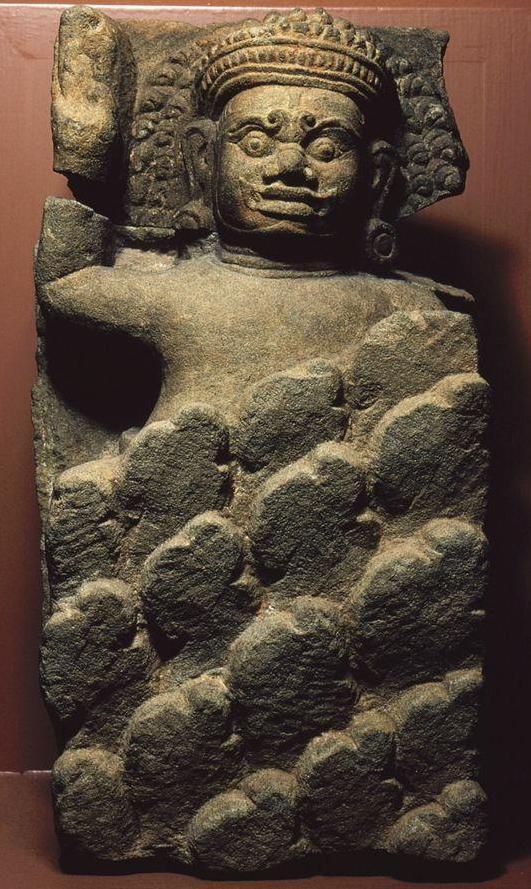
Rahu, The Demon of Eclipses
10-11th century
Photographer: LACMA
Date of photograph: 1988
Set 87, Los Angeles County Museum of Art VIII: Southeast Asian Sculpture
Cambodia
306 notes
·
View notes
Text
Kwanzaa:

Kwanzaa, an annual holiday celebrated primarily in the United States from December 26 to January 1, emphasizes the importance of pan-African family and social values. It was devised in 1966 by Maulana Karenga, Inspired by Africa’s harvest celebrations, he decided to develop a nonreligious holiday that would stress the importance of family and community while giving African Americans an opportunity to explore their African identities. Kwanzaa arose from the black nationalist movement of the 1960s and was created to help African Americans reconnect with their African cultural and historical heritage. The holiday honors African American people, their struggles in the United States, their heritage, and their culture. Kwanzaa's practices and symbolism are deeply rooted in African traditions and emphasize community, family, and cultural pride. It's a time for reflection, celebration, and the nurturing of cultural identity within the African American community.
Kwanzaa is a blend of various African cultures, reflecting the experience of many African Americans who cannot trace their exact origins; thus, it is not specific to any one African culture or region. The inclusiveness of Kwanzaa allows for a broader celebration of African heritage and identity.
Karenga created Kwanzaa during the aftermath of the Watts riots as a non-Christian, specifically African-American, holiday. His goal was to give black people an alternative to Christmas and an opportunity to celebrate themselves and their history, rather than imitating the practices of the dominant society. The name Kwanzaa derives from the Swahili phrase "matunda ya kwanza," meaning "first fruits," and is based on African harvest festival traditions from various parts of West and Southeast Africa. The holiday was first celebrated in 1966.
Each day of Kwanzaa is dedicated to one of the seven principles (Nguzo Saba), which are central values of African culture that contribute to building and reinforcing community among African Americans. These principles include Umoja (Unity), Kujichagulia (Self-Determination), Ujima (Collective Work and Responsibility), Ujamaa (Cooperative Economics), Nia (Purpose), Kuumba (Creativity), and Imani (Faith). Each family celebrates Kwanzaa in its own way, but Celebrations often include songs, dances, African drums, storytelling, poetry readings, and a large traditional meal. The holiday concludes with a communal feast called Karamu, usually held on the sixth day.
Kwanzaa is more than just a celebration; it's a spiritual journey to heal, explore, and learn from African heritage. The holiday emphasizes the importance of community and the role of children, who are considered seed bearers of cultural values and practices for the next generation. Kwanzaa is not just a holiday; it's a period of introspection and celebration of African-American identity and culture, allowing for a deeper understanding and appreciation of ancestral roots. This celebration is a testament to the resilience and enduring spirit of the African-American community.
"Kwanzaa," Encyclopaedia Britannica, last modified December 23, 2023, https://www.britannica.com/topic/Kwanzaa.
"Kwanzaa - Meaning, Candles & Principles," HISTORY, accessed December 25, 2023, https://www.history.com/topics/holidays/kwanzaa-history.
"Kwanzaa," Wikipedia, last modified December 25, 2023, https://en.wikipedia.org/wiki/Kwanzaa.
"Kwanzaa," National Museum of African American History and Culture, accessed December 25, 2023, https://nmaahc.si.edu/explore/stories/kwanzaa.
"The First Kwanzaa," HISTORY.com, accessed December 25, 2023, https://www.history.com/this-day-in-history/the-first-kwanzaa.
My Daily Kwanzaa, blog, accessed December 25, 2023, https://mydailykwanzaa.wordpress.com.
Maulana Karenga, Kwanzaa: A Celebration of Family, Community and Culture (Los Angeles, CA: University of Sankore Press, 1998), ISBN 0-943412-21-8.
"Kente Cloth," African Journey, Project Exploration, accessed December 25, 2023, https://projectexploration.org.
Expert Village, "Kwanzaa Traditions & Customs: Kwanzaa Symbols," YouTube video, accessed December 25, 2023, [Link to the specific YouTube video]. (Note: The exact URL for the YouTube video is needed for a complete citation).
"Official Kwanzaa Website," accessed December 25, 2023, https://www.officialkwanzaawebsite.org/index.html.
Michelle, Lavanda. "Let's Talk Kwanzaa: Unwrapping the Good Vibes." Lavanda Michelle, December 13, 2023. https://lavandamichelle.com/2023/12/13/lets-talk-kwanzaa-unwrapping-the-good-vibes/.
298 notes
·
View notes
Text
Since Andrew is taking some well deserved time away from the public at the moment, let's revisit (or visit for the first time, if you're new here) this stunning photoshoot from Mr. Porter, October 2019, when he was doing press for Modern Love and his Ripley casting had just been announced (yes, it's taken that long for it to come out).
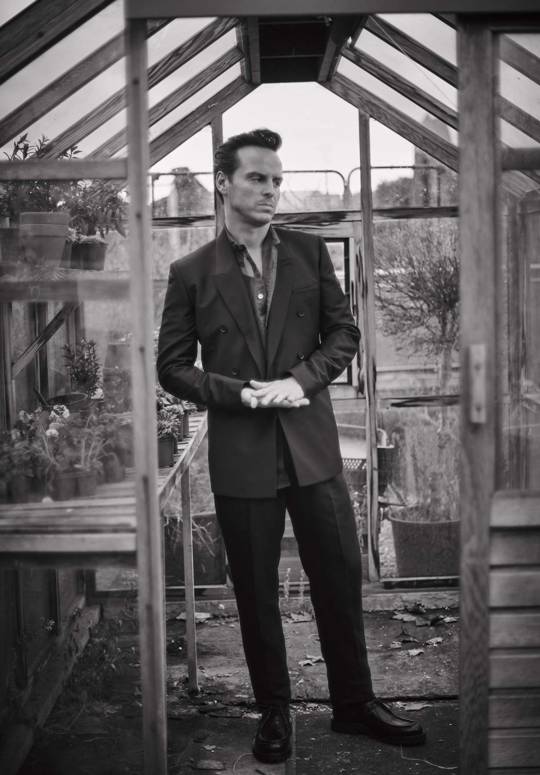
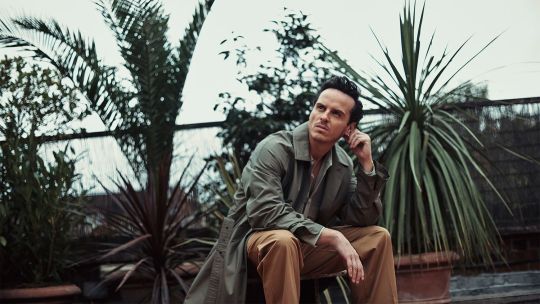
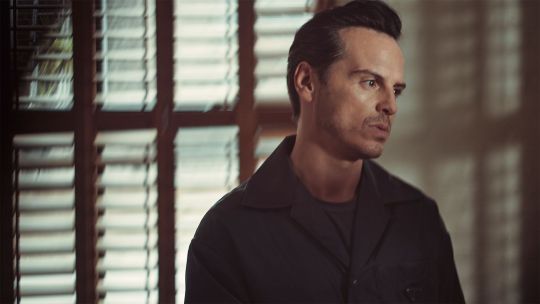
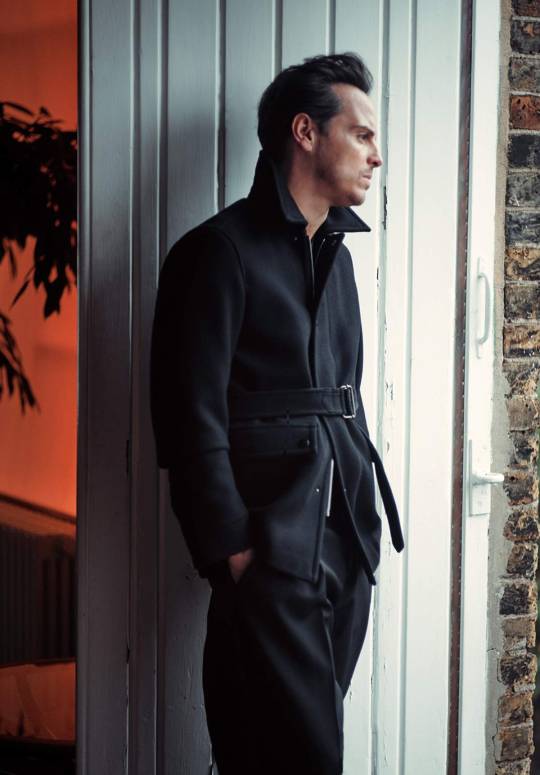
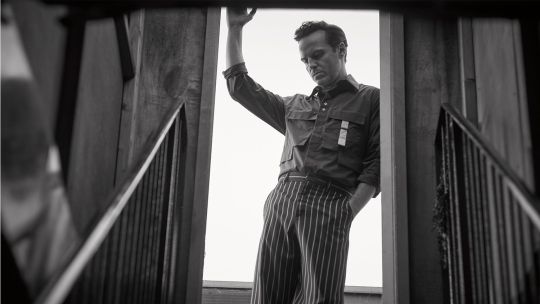

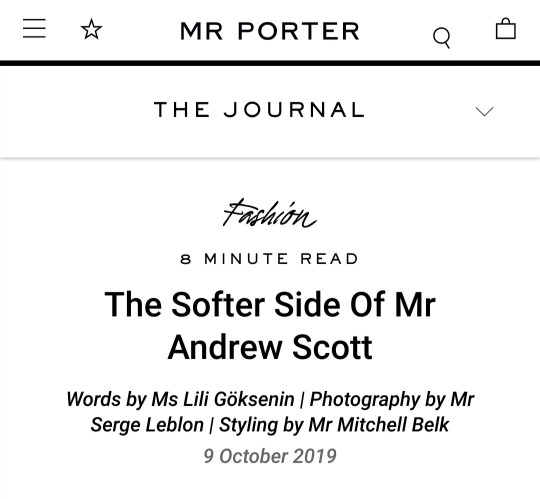

Mr Andrew Scott’s big brown eyes are open wide in amused disbelief. “That was not an Irish accent,” he says in his musical Irish brogue. “That was a West Country accent.” How embarrassing for an interviewer who thought to connect with her subject by lightly mocking Mr Ed Sheeran’s – again – not-Irish accent in his cameo in Mr Scott’s episode of Amazon’s upcoming anthology series, Modern Love. Panic sets in. “It’s all right,” he says, soothingly. “It’s all right. Accents are such funny things.”
You know what else is a funny thing? Sitting with Fleabag’s “hot priest” – 2019’s most unexpected sex symbol – in a wine bar in Bermondsey, southeast London, talking about vulnerability, romcoms and love stories. Or, to take another angle: sitting across the table from the deranged Jim Moriarty and letting him pick out a rosé. That tickles, too. Having Hamlet express the need for a mini-break in, he doesn’t know, Copenhagen? Amsterdam, maybe? Surreal.
But actually, Mr Scott, who is wearing what can only be described as a modified sweatsuit (shorts and a zip-up sweatshirt, no shirt beneath) after our photoshoot isn’t funny funny. No, Mr Scott is serious: reserved and contemplative, but with the energy of a theatre nerd who, every once in a while, rests his head in his hands, cupping his fingers around his eyes to form blinkers while he thinks about a question you’ve just asked. In this quiet wine bar. He’s not an evil murderer, an agent of a shadowy organisation, or an overly excited (wink) cleric. He’s just a nice guy who sympathises about the difficulty of parsing the subtleties of the many accents in the British Commonwealth (and beyond).
Mr Scott is still hot off his run in Fleabag, even though the show ran from March to April of this year. A few weeks ago, he received a GQ Men of the Year Award, and just a few weeks after that, was in Los Angeles at the Emmy Awards where Fleabag cleaned up, winning three awards.
Of course, this is not Mr Scott’s big break. He’s been in the business since moving from Dublin to London 20 years ago to pursue acting. His dad worked in employment, helping young people find the right careers and his mother was an art teacher. “They were definitely into following your passion and doing that for the rest of your life,” he says. “Rather than, ‘You should be a lawyer,’ or whatever the fuck.”
And this has been a year for Mr Scott’s passions. Aside from Fleabag, and an episode of Black Mirror that landed on Netflix this June, he’s making a poignant appearance in the aforementioned _Modern Love,_ which will drop all at once on 18 October. A series of discreet episodes, each one features its own starry cast (Mr Dev Patel, Mr John Slattery, Ms Tina Fey, Ms Anne Hathaway and, of course, Mr Ed Sheeran, among others), based on the much-loved New York Times column from which it takes its name. Mr Scott’s episode, which co-stars Ms Olivia Cooke and Mr Brandon Kyle Goodman, is loosely based on an early column written by the sex-and-relationships writer Mr Dan Savage about the unusual experience he and his partner had with adoption. “It’s just a really sweet little story. It’s not about a romantic relationship,” he says, (many Modern Love entries are not). “It’s simply about the relationships between people.”
He’s also currently filming in Cardiff for the BBC TV series of His Dark Materials. And maybe there’s a Marvel movie in his future? “Oh, fuck. Completely false,” he says. “Someone said, ‘Are you going to be in a thing?’ I said, ‘No,’ and I said, ‘There have been discussions.’ And it’s like ‘Andrew Scott has been in discussions.’”
That’s what happens when suddenly everyone wants you – to use Twitter parlance – to run them over with your car. The Priest, unlike his other characters, was a sex symbol, one that wears the hell (forgive me, Father) out of a cassock. But who could be surprised that Mr Scott turned a priest into the “Hot Priest” simply by saying “kneel”? (If you don’t know what that means, stop reading now, watch the show, come back.) In fact, he has been making words positively drip with meaning for nearly a decade.
Consider Moriarty, the insane criminal puppet master Mr Scott played for six years across four seasons of the BBC’s Sherlock, opposite Mr Benedict Cumberbatch in the titular role. This particular Moriarty – Holmes’ famous nemesis, who has also been played by Messrs Orson Welles, John Huston and Sir Laurence Olivier – is indelible and utterly idiosyncratic. “If you’re going to do it, I don’t see there’s any point in doing it without putting your own stamp on it. I never look at any previous incarnations,” says Mr Scott. The result of this thinking – in Sherlock, at least – was a Moriarty who is all sing-song eeriness, molten physicality, and questionable cutaway collars. “He was quite theatrical; he was grotesque, sort of the archetypal villain,” he says. Archetypal, indeed: the role propelled him into the world of maniacal superfandom. He might not have received a dedicated stan nomenclature like his co-star (ahem, “Cumberbitches”), but the role made Mr Scott a household name.
Of course, establishing yourself as adept at playing evil incarnate probably leads to people wanting to cast you in more Moriarty-like roles. “Yeah, yeah, yeah, yeah, yep, yeah,” he says, six times. “Yeah, exactly right,” (one more). “I turned down a lot. The shadow of that character took over for a little while.” The craze got to be so tiresome that he asked the interviewer for a recent profile in The Guardian not to ask him about Moriarty at all (two years after he last appeared in the series). But now he sees a bigger picture, understands how being the object of abject obsession can be a good thing. “I think to answer your questions,” he says, tapping his fingers on the table, “it’s been really good fun.”
Mr Scott demurs when asked what it’s like to be the quencher of many thirsts on the internet. “People don’t say that to me. People don’t say, ‘Oh my God...” He shakes his head and trails off, perhaps in horror of what fans could be saying to him. It’s a little hard to believe that he wouldn’t be mobbed as he walks down the street. After all, one major British publication declared that Fleabag and the Priest were the only couple worth talking or tweeting about this year. (We guess Meghan and Harry, and Kim and Kanye can relax.)
“If I’m honest, it’s only really just starting to dawn on me, the global effect the show has had. People like a bit of transgression, they just do.” Any follower of his career, though, understands that it’s more than just good writing that makes him so very watchable (though good writing, is, politely, what he puts it down to). His chemistry is electric with Ms Phoebe Waller-Bridge, as it was electric with Mr Cumberbatch, and palpable even if you weren’t lucky enough to catch his rendition of Hamlet and – like this interviewer – had to watch a clip on YouTube.
Mr Scott’s character, Tobin, in Modern Love is the most subdued we might ever see him. There’s very little shouting, and none of the wide-eyed glaring that has defined his roles to date. Instead, he plays sweetly, quietly off a tiny baby, and tells goodnight stories to an adorable little girl. Perhaps this is a harbinger of softer roles to come. “I’d love to be in a romcom,” he says. “I love watching people fall in love, and how mad it is.” And yet: it was just announced that he will be playing Tom Ripley in a new adaptation of The Talented Mr Ripley. So much for avoiding the nutters.
“What always amazes me is how innocent we are as human beings,” he says, sidestepping yet another probing question about being so irresistible right now. “We are very easily manipulated by stories. If someone puts scary music behind someone and they’re told this person’s eyes are absolutely terrifying, you go: ‘Oh my God, that person is scary, and his eyes totally freak me out.’”
“But then,” he continues, “[you’re told] ‘the priest is hot, wait till you see him’. And then you look at his eyes in a very different way and it’s the manipulation of the storytelling. It literally changes your character.” Hmmm.
“The success is the writing,” he tries, again, to argue. But it’s hard to be convinced that an actor who’s hopped from one iconic character to another is simply lucky with writing. He sees he’s not getting anywhere and changes tack. “Acting is just a way of experimenting with different parts of myself. Vulnerability is something I’m really, really interested in. I think vulnerability is at the centre of every character I’ve ever played even if they don’t appear or present as vulnerable.”
Throughout this conversation, his eyes have flicked around the bar, and he pauses from time to time to comment on the other patrons. At one point, a woman is coughing so vehemently, he stops mid-sentence to remark, humorously, on whether she might be dying. Now, he spots something on the bar. “Oh my God, she’s reading Brené Brown.” We both turn to stare at the book.
“She writes a lot about vulnerability,” he explains, excited. “[Being vulnerable] is how you get ahead. I really, really strongly believe that. [Vulnerability is] strong, it’s really strong.”
Perhaps this is the secret we’ve been trying to distil about his appeal: Mr Scott uses vulnerability to bring us all into a space of fear or sadness or lust or anger with him so that every character he plays – whether it’s the hottest priest in London, a gay man in Brooklyn trying to become a father, or a murderous villain – thrums with the heartbreak that comes with being human.
“The more I work,” he continues, “the more I just think every story is in some way concerned with love – or the lack of it.” He smiles an earnest little smile and we both know this is the place to stop. “That’s the way life is,” he says. “It’s so fast and furious.”
https://www.mrporter.com/en-hk/journal/fashion/the-softer-side-of-mr-andrew-scott-1052122
37 notes
·
View notes
Text

First airmail delivery in Las Vegas. Rockwell Field, April 17, 1926. Location: Southeast of present Sahara Ave & Paradise Rd intersection.
The first air strip in Las Vegas opened 11/25/20. Originally called Anderson Field, it became Rockwell Field under new owners in '25. Western Air Express Inc. began using the strip when they were contracted the U.S. Postal Service's 650-mile long Contract Air Mail Route #4 from Los Angeles to Salt Lake City.
Western's first flight took place April 17, 1926 with a Douglas M-2 airplane piloted by Maurice “Maury” Graham. Western continued using the air field until ’29 when the site was purchased by Leigh SJ Hunt. The company relocated to a new air field built north of Las Vegas, the present location of Nellis AFB.
All photos by Oakes Vegas Studio, April 17, 1926, from Leon Rockwell Photograph Collection (PH-00008), and Robert E. "Spud" Lake Photographs (PH-00041), UNLV Special Collections.
First anniversary postcard, mailed 4/17/27

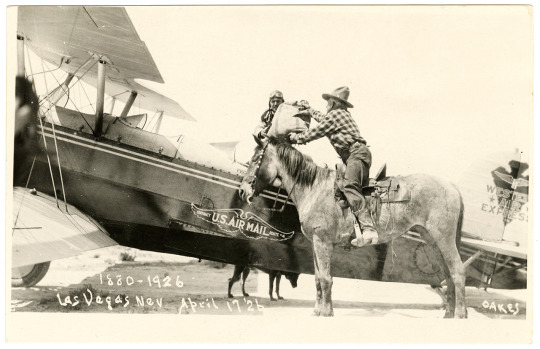
36 notes
·
View notes
Text
It Happened Today in Christian History
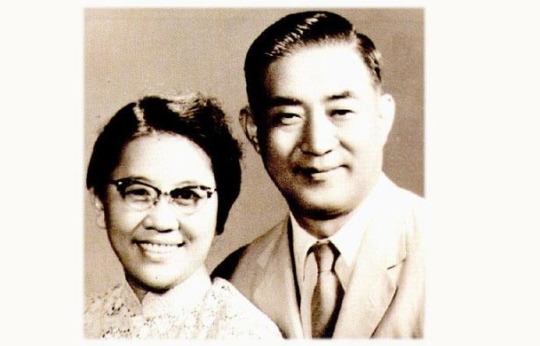
February 13, 1985: Death of Ji Zhiwen, who had conducted a notable evangelistic work in China. He established the Bethel Evangelistic Band in Shanghai, followed by the Chinese Evangelization Society and an orphanage (also in Shanghai), and, when driven from mainland China, founded churches in Taiwan. He had extended his ministry to Southeast Asia, founding kindergartens, orphanages and day care centers, and had developed a Christian press before retiring to Los Angeles.
15 notes
·
View notes
Text

THE CREATOR
First, if you’ve seen some of the headlines for reviews of “The Creator”, it’s not as bad as it sounds. But is the story new or original… no.
The good stuff?
I first saw John David Washington (Denzel’s son) in “Tenet”. I liked him there, and that why I gave this movie the benefit of the doubt. And yes, he’s good here too.
Madeleine Yuna Voyles played a child-size robot (a Simulent). She cute and at first it was hard to tell if that was the extent of her talent, but as the movie progressed, she had some very emotional scenes and handled them like a seasoned pro.
Super-hero movies have been bashed lately for bad special effects, but here the effects are well done - mostly robot, flying vehicles, and futuristic sky scrapers. Except for a few goofy looking robots, the art design is great and they are well executed.
The bad?
Artificial Intelligence has been portrayed as cinematic baddies since before the Terminator. This movie tries to paint the US government as the villains but it feels heavy handed. It uses the Viet Nam war as its model.
Every war movie has a hard ass colonel calling the shots and committing atrocities. Here the colonel is played by Allison Janney. She’s pretty one-dimensional, spitting out bullets and eating baby robots. (Kidding!!)
If the writer and director were trying to tell a new story, why were there so many well worn tropes? Once you notice them - they telegraph what will happen next. For instance, Joshua (Washington) is searching for his wife played by Gemma Chan. He thought died five years earlier. She had been pregnant with his child at the time. Washington then finds a child robot who he uses to find his wife. He keeps saying he wishes to see Chan one last time. Meanwhile girl robot just happens to look the age of his child had she lived… you can connect the dots.
Several plot point didn’t make sense. Why do the robots have an on-off switch that’s easily accessible at the side of their heads? During the climactic scenes (which took too long) there is a giant MacGuffin floating above Los Angeles. Over the course of what could only have been an hour, the MacGuffin is suddenly over Southeast Asia - how did it get there so fast?!?
While I won’t spell out the end, remember when I said Joshua keeps saying he wished to see his wife one last time? Be careful what you wish for!

#the creator#Gemma Chan#allison janney#John David Washington#artificial intelligence#robots#Viet Nam war#spitting bullets and eating robot babies#over used movie tropes#spoilers
20 notes
·
View notes
Text
"It’s insane, it’s just insane,” Valerie Haney kept saying as she emerged from her first day undergoing the Church of Scientology’s top-secret “religious arbitration” process. Haney’s outfit that day—a tight black minidress and thigh-high leather boots complementing her long, curly hair and spiky sharp fingernails—was as different as possible from the drab Sea Org uniforms she had been forced to wear for decades.
Her two attorneys, Guy D’Andrea and Graham Berry, were ready with their notepads, and all eyes were on Haney, who was set up in front of a portable backdrop in a hotel room at the Commerce Casino, just a mile away from Scientology’s massive printing plant warehouse southeast of Los Angeles—where she had just spent the past several hours reliving the most traumatic events of her life. “How did you feel going in there?” D’Andrea asked after a privately hired court stenographer had put Haney under oath.
“Scared,” she replied. “I was shaking.” Seven years after escaping from Scientology in the trunk of a car and taking her fight against the church all the way to the Supreme Court, Haney had been forced to go crawling back to the place she had never wanted to set foot in again. Valerie Haney was born to parents who had already signed Scientology’s billion-year “Sea Org” contracts by the time she arrived in 1979.
In a new 54-page sworn declaration, Haney explains why spending the first 33 years of her life in Scientology—raised by the church rather than by her parents—helps to explain how she got where she is today.
#Secret Adventure Club#Church of Scientology#brain washing#deprogramming#Scientology#grifters#religious cults#cults
12 notes
·
View notes
Text
GOD OF WAR 3 AND SPECIAL FATHER-SON WOUNDS
On this edition of J.T. the L.A. Storyteller Podcast, yours truly sits down for an extensive conversation with the Social Primate Podcast’s Eddie Aguirre. Eddie is a graphic designer by trade and has hosted the Social Primate Podcast since 2017. We discuss Eddie’s roots on the Southeast side of Los Angeles, better known as SELA, the city of Cudahy recently calling for a ceasefire in Gaza, God of…

View On WordPress
0 notes
Text
What Downey, California's Sercan Naldoken did to Lisa Renee Conduff
Lisa Renee Conduff of Downey, Southeast Los Angeles County, California, United States has died. She was 56.
youtube
View On WordPress
0 notes
Text
When Mike Davis thought about California, he thought about concrete. In 1998, [...] [Davis] took the stage at the founding conference of Critical Resistance, the Los Angeles prison abolition organization, and held up a hunk of his driveway. To a kid in the 1950s, “this is what the California Dream was made of,” Davis regaled the audience. In those days, concrete embodied the postwar promise of liberal capitalism: “great dams,” good union jobs, and tuition-free colleges. Now, Davis looked at his prop and saw “something rather sinister.” Concrete meant the prison-industrial complex -- and the life-affirming investments that mass incarceration had crowded out. “Each of those prisons,” lamented Davis, “is a school or a hospital that’ll never be built.”
If public works are the material expression of political priorities, then we can learn a lot about a place from what gets built. Davis’s focus was on prisons, as the antithesis of the colorblind “California Dream” he grew up on in Fontana, a steel town fifty miles east of Los Angeles. But follow the concrete into another outlying region, and the relationship between race, infrastructure, and abandonment becomes even more tangible.
Beginning in the 1960s and accelerating after the election of Tom Bradley in 1973, the City of Los Angeles transformed its port from a lowly backwater into the nation’s “gateway to the Pacific Rim.” The San Pedro Bay Port Complex -- an amalgamation of the facilities in L.A. and neighboring Long Beach -- is today the busiest port in the Western hemisphere. Its growth stands as a triumph of political imagination, made possible by concrete and other raw materials. In the port’s shadow, however, live some of L.A.’s poorest and most marginalized communities. Places like the aptly named Harbor Gateway: a thin ribbon that links inland Los Angeles to the harbor region to the south. What might this area -- the gateway to the gateway to the world -- teach us about the struggle against inequality under global urban capitalism?
---
L.A.’s port was not always so central to the city’s economy and self-image. Its turbocharged expansion under Tom Bradley was part of the mayor’s larger project to make Los Angeles a “world city” [...]. Bradley’s L.A. sat at the vanguard of what liberal technophiles called the “New Economy”: a growth machine organized around finance, high-tech, and logistics, unlike the industrial factories of the Northeast and Midwest. The rising cohort [...] saw the financial sector and Silicon Valley as potential sources of inclusive economic development [...]. To proponents and critics alike, the emergent New Economy conjured images of an ethereal world of fictitious capital and instant communications. [...].
Rhetorically and literally, the “New Economy” was still grounded in specific places and structures, as L.A.’s logistics sector made clear. [...] The volume of containerized cargo passing through Los Angeles more than quadrupled in the 1980s, from 476,000 “cans” in 1981 to over two million in 1989. The cost of shipping from Asia dropped by as much as 60 percent. Today, L.A.’s is the busiest port in the Americas and ranks ninth worldwide. [...]
“What develops in the outer fields of Los Angeles and other megacities,” writes activist and scholar Charmaine Chua, “is an architecture of urban capitalism that has shifted away from ‘public works’ -- infrastructure as a public good -- and toward remaking the globe as a logistical leviathan.” The restructuring of the U.S. economy, in other words, can be understood in terms of the things that governments built, and the places that were allowed to languish.
---
Much of the wealth of the port must also pass through Harbor Gateway -- a working-class, mostly Latinx community in the area known as Southeast L.A. [...] Harbor Gateway is a cartographic contrivance, and because of this, it’s also a jurisdictional orphan: some of its homes fall within the tortured polygon of Los Angeles, while others lie in unincorporated L.A. County. Historically, this has allowed officials in both governments to take on, or skirt, responsibility. It’s often made Harbor Gateway a “No Man’s Land,” with neither the city nor county eager to meet the needs of its working-class Latinx community.
This and other overlooked areas have not benefitted from L.A.’s logistics revolution. But to say Harbor Gateway has been “left behind” would be incomplete. As Geismer argues, policymakers’ worries about those Americans whom globalization “left behind” has reinforced the belief that pockets of poverty and unemployment are exceptions to national economic growth, as opposed to features of economic restructuring.
In historical terms, the fate of Southeast L.A. is closely linked to the rise of logistics via the process that Ruth Wilson Gilmore calls “organized abandonment.” While policymakers built up the logistics leviathan, Southeast L.A. lost many of the resources -- including decent jobs and housing, well-funded schools, and healthy environments -- that allow people to live meaningful lives. [...]
---
[C]ommunities near the port must live with the environmental consequences: diesel fumes, noise pollution, and chemical spills among them. In the early 2000s, researchers determined that the port complex was the largest air polluter in Southern California, emitting the equivalent of sixteen thousand tractor-trailers idling 24 hours a day.
Chua describes the considerable ecological and health problems associated with logistics, which include elevated rates of cancer, asthma, heart disease, and depression. In many of these places, however, the etiology of serious illness can be hard to pinpoint. From 1947 until 1982, Harbor Gateway was home to Montrose Chemical, the nation’s largest manufacturer of the notorious pesticide DDT. The plant remains an active Superfund site; in some areas, DDT levels exceed 700,000 parts per million. For years, Montrose also dumped barrels of “acid sludge” -- totally legally -- just off-shore. As many as half a million lay on the ocean floor, according to a Los Angeles Times investigation.
---
There was no golden age of capitalism in Southeast L.A. The California Dream served to mask corporate abuse [...].
But the abandonment of places like Harbor Gateway has also intensified in times of austerity. Longstanding ecological violence is exacerbated by an approach to governing that privileges the logistics sector above all else. The human costs of that choice -- cancer, respiratory damage, heart disease -- are well documented.
This makes Southeast L.A. the underbelly of global capitalism -- of cities’ reliance on logistics amid grave social and environmental harms. Behind the promise of the just-in-time supply chain is a world of slow violence and premature death, distributed through racial and spatial disadvantage.
---
All text above by: David Helps. “The Politics of Concrete.” Protean (online). 21 July 2022. [Bold emphasis and some paragraph breaks/contractions added by me. Presented here for commentary, teaching, personal use, criticism purposes.]
45 notes
·
View notes
Text
NORWALK - The Norwalk La Mirada Unified School District board of education listened as Arthur Schaper, the California MassResistance field director, expressed unfounded claims about the John Glenn and Southeast Academy High School Wellbeing Center.
“These wellbeing centers, your staff, have been trained by Planned Parenthood,” Schaper said. “You have these counselors who teach kids they can change their sex like flipping a switch, it’s unacceptable.”
California MassResistance, an organization the Southern Poverty Law Center labeled a hate group, arrived at the Norwalk La - Mirada Unified School District board meeting on June 26 to oppose the Wellbeing Center and called for its removal.
The organization spread the unfounded claim on social media that Planned Parenthood trained the staff at the center. Schaper claimed, without evidence, that Planned Parenthood pushes an agenda of “sex mutilation” on students and influences them to become transgender.
The Torrance resident continued to call the LGBTQIA+ ideology a “cult and an illness,” as his California MassResistance supporters applauded. Schaper also accused the school board of hiding information on the center from parents and vowed to go door-to-door to spread his beliefs to the community.
NLMUSD superintendent, John Lopez, explained the district addressed most of MassResistance’s concerns of the Wellbeing Center with a fact sheet of frequently asked questions in February.
“The Wellbeing Center was approved by the board of education in 2019,” Lopez said. “They talked to the community members of John Glenn and got an intake of services they wanted.”
The services provided through the center are student-initiated, according to the FAQ. Students are reminded to include parents in their care, as expressed in the district’s memorandum of understanding with the LACDPH.
A minor may consent to medical care related to contraception, the prevention, or the treatment of pregnancy without parental consent, according to Cal. Family Code § 6925.
The superintendent emphasized that Planned Parenthood is not involved with the Wellbeing Center, after the board voted against the Planned Parenthood component in August 2022.
Wellbeing Center staff are trained by the Los Angeles County Department of public health.
Lopez was confused about how Schaper and MassResistance tied LGBTQIA+ into the Wellbeing Center.
“It’s disappointing that we have an opportunity to help our community by giving them resources they need and groups are putting a spin on things that aren’t happening,” Lopez said. “LGBTQIA+ wasn’t even addressed in any of our frequently asked questions because that never came up until now.”
The Wellbeing Center provides health education, information about substance abuse, mental health and stress reduction groups. Masters Level Health Educators from the LACDPH are present to support students, teach sexual health and provide sexually active young people with counseling, according to the FAQ.
A registered nurse is also available for on-site testing and treatment for sexually transmitted infections, condoms, over-the-counter emergency contraception, pregnancy tests and sexual health information for students.
The FAQ emphasizes that parents can also utilize the Wellbeing Center. Classes at the center teach parents about teen health, how to discuss alcohol and drugs with their child and how to effectively explain sexual decision-making.
11 notes
·
View notes
Text
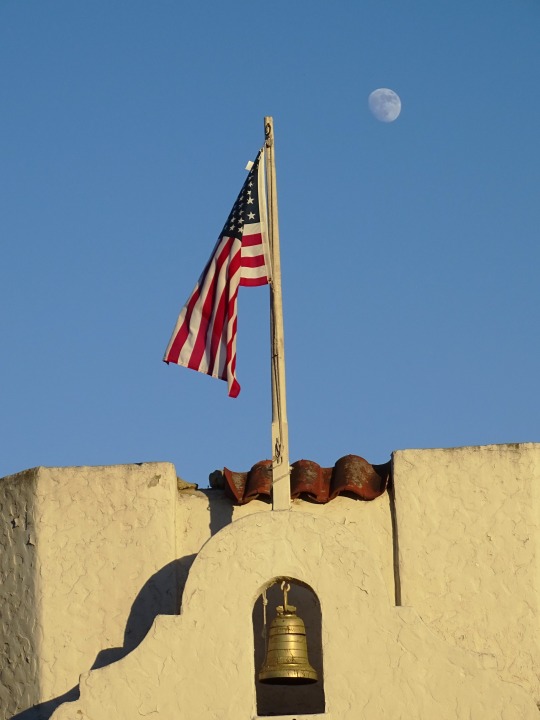

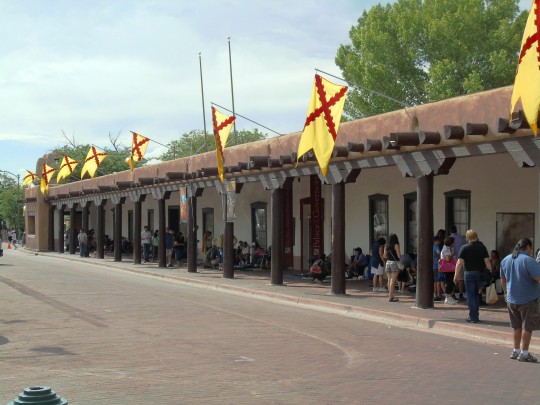
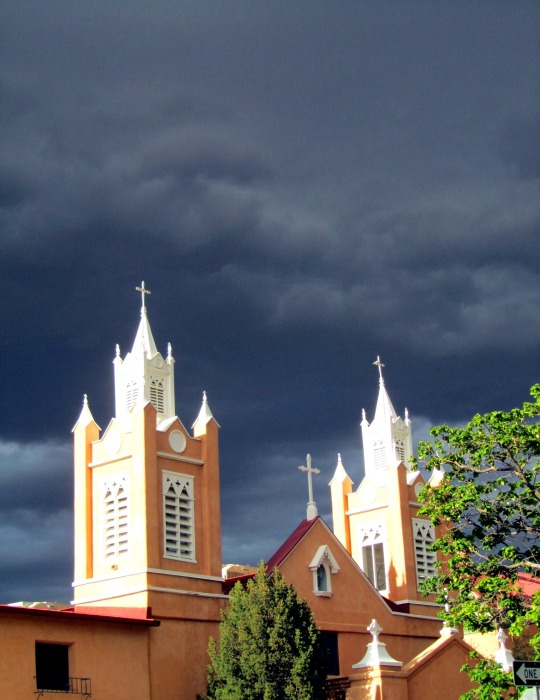
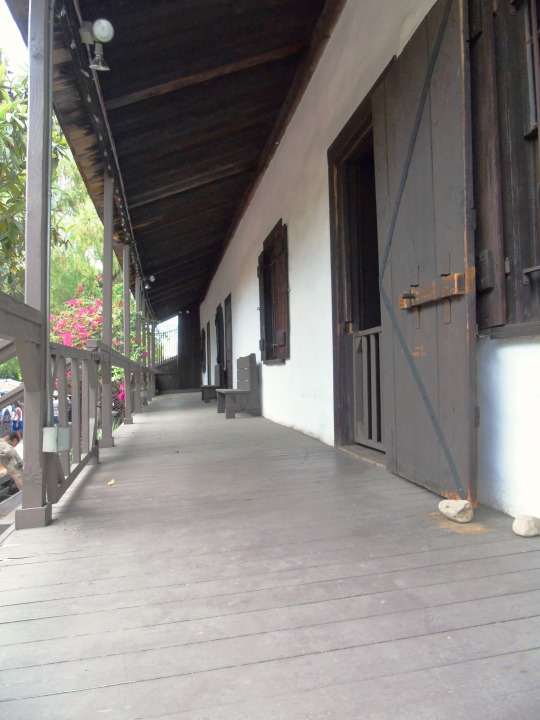


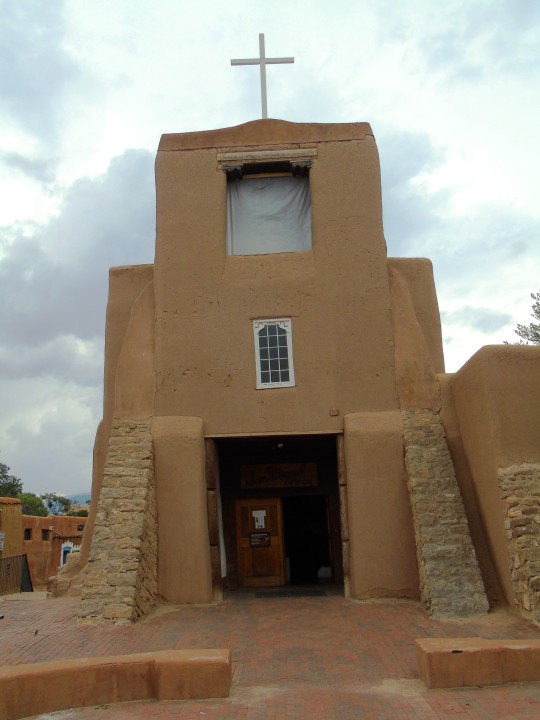
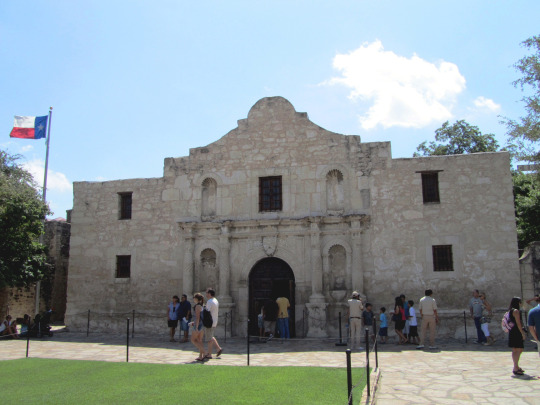
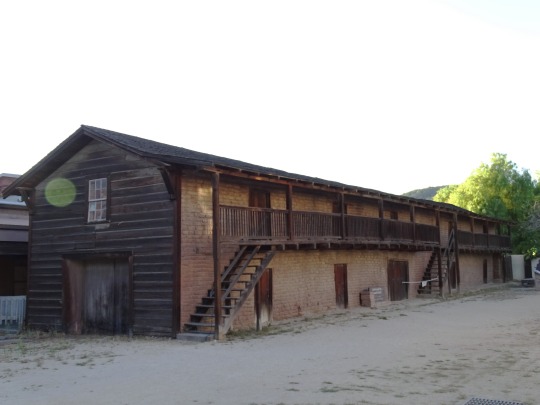

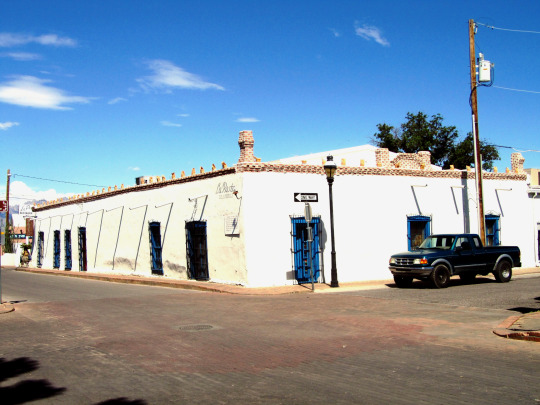


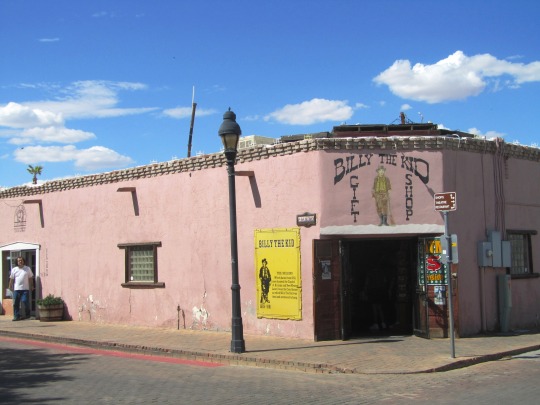
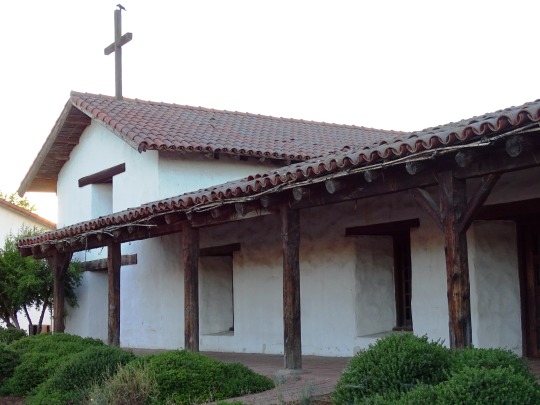
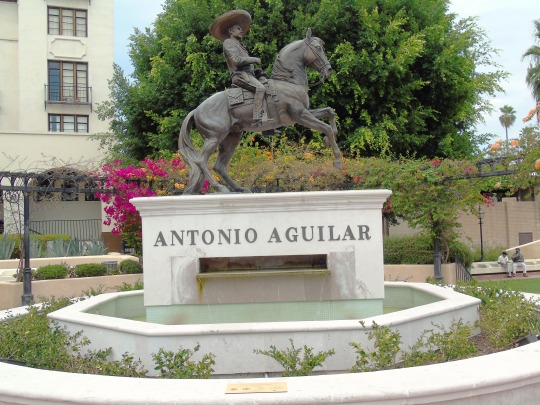
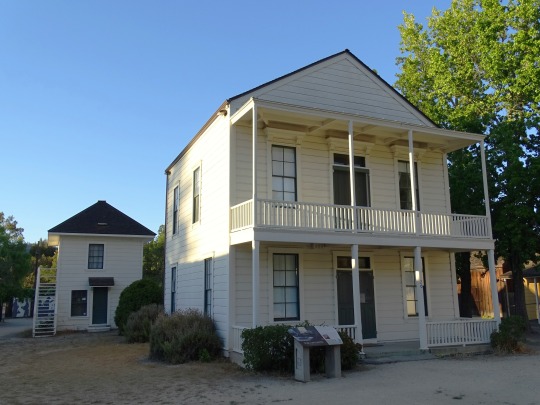
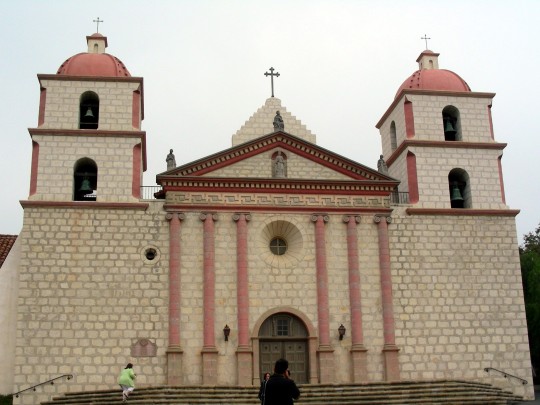

Cinco de Mayo
Cinco de Mayo commemorates the Mexican victory at the Battle of Puebla on May 5, 1862, during the Franco-Mexican War. The day is a minor, regional holiday in Mexico, being mainly celebrated in the state of Puebla where the city of Puebla is the capital. Military parades, speeches, and reenactments of the battle are held there. It is also celebrated in Veracruz and Mexico City, but in many other places of Mexico, May 5th is no different than any other day.
It is more widely celebrated in the United States, where it commemorates the battle, and celebrates Mexican culture and heritage. It is most celebrated in areas with large Mexican-American populations. The day began gaining popularity in the 1940s, during the beginnings of the Chicano movement. Mexican immigrants used the day to show their pride in their Mexican heritage. Awareness of the holiday was further raised in the 1960s by Chicano activists. Today it is celebrated by many in the country, regardless of their ethnic background. Parades, parties, and festivals are part of the day. These events usually include mariachi music, Mexican folk dancing, and traditional Mexican foods. The largest festivals in the country are held in Los Angeles, Chicago, and Houston.
Some have been critical of the day, saying it didn't have more widespread demographic appeal until it began being linked to Mexican alcoholic drinks. Some have also been critical of the day by saying it sometimes perpetuates negative stereotypes of Mexican people. The day has sometimes also been confused with Mexican Independence Day, which commemorates the call to arms against the Spanish, that took place on Sept 16, 1810. That day began being celebrated years before Cinco de Mayo.
The story of the Battle of Puebla deals with Mexico's war with France. In 1861, Benito Juárez became president of Mexico, at a time when the country was in trouble economically. They had defaulted on debts to France, Britain, and Spain, and those countries sent naval forces to Veracruz, Mexico, in an effort to retrieve their money. Britain and Spain worked out an agreement and withdrew. But France stayed, in an effort to seize back their money, and to create a French Empire in Mexican territory. France also wanted to limit the influence of the United States in the region. Although, during this time, the United States was preoccupied with the Civil War, giving France more of an opportunity to do as it pleased.
In late 1861, French forces landed at Veracruz and put Juárez and his government on the run. 6,000 French troops, under General Charles Latrille de Lorencez, planned an attack at Puebla de Los Ángeles, a town 80 miles southeast of Mexico City, and were optimistic about its outcome. Juárez was stationed just north of there and sent 2,000 (by some accounts 4,000) men to Puebla. Poorly supplied and outnumbered, they were led by General Ignacio Zaragoza. They fortified the town and got ready for French.
On May 5, 1862, the French attacked the town, and the battle lasted from morning until night. They lost between 500 to 1,000 soldiers, while Mexico lost less than 100. After the battle ended, the French retreated to the Gulf Coast. It was not a strategic win for Mexico but was a symbolic victory and morale booster. General Zaragoza died a few months later, and the town was renamed Puebla de Zaragoza. France's leader, Napoleon III, the nephew of Napoleon Bonaparte, installed Austrian Archduke Ferdinand Maximilian as emperor of Mexico in 1864. He was executed by Juárez's forces in 1867. France withdrew from Mexico the same year.
How to Observe
One way to celebrate the day is to eat traditional Mexican foods, or foods associated with Mexico, such as tacos, burritos, sopes, enchiladas, grilled corn, chips with salsa verde or guacamole, or mole poblano, which is an important food in Puebla. You could wash it all down with some margaritas. Mexican mariachi music or other Mexican music could be listened to, or you could do some Mexican folk dancing. Food, music, and dancing will likely be a part of any Cinco de Mayo festival or event, so it may be best to attend one! You could attend Los Angeles's Festival de Fiesta Broadway, the largest Cinco de Mayo event in the world (note: this Cinco de Mayo celebration is held in late April). Chicago and Houston are also known for large events. San Diego has various events, including a battle reenactment. The Cinco de Mayo festival in Chandler, Arizona, is known for its Chihuahua parades, races, and pageants. There are many smaller events taking place in cities and towns across the United States. Check to see what is taking place near where you live. In Puebla, there is a museum dedicated to the battle, and the battlefield is a park. A reenactment, replete with rifle and cannon shots, takes place in Puebla on the day, and it ends with a sword fight between the Mexican and French generals. No matter how you celebrate the day, make sure you are being culturally sensitive if you are not of Mexican or Mexican-American descent.
Source
#Sonoma State Historic Park#Mission San Francisco Solano#Cinco de Mayo#CincoDeMayo#AnniversaryOfTheBattleOfPuebla#5 May#Palace of the Governors#Santa Fe#architecture#cityscape#USA#travel#summer vacation#original photography#Old Town San Diego State Historic Park#El Pueblo de Los Angeles Historical Monument#2014#Avila Adobe#the Alamo#Texas#Casa de Estudillo#San Antonio#La Posta DeMesilla#tiles#ristra#Castillo de San Marcos National Monument#St. Augustine#Mission Santa Barbara#San Felipe de Neri Church#Albuquerque
2 notes
·
View notes
Text
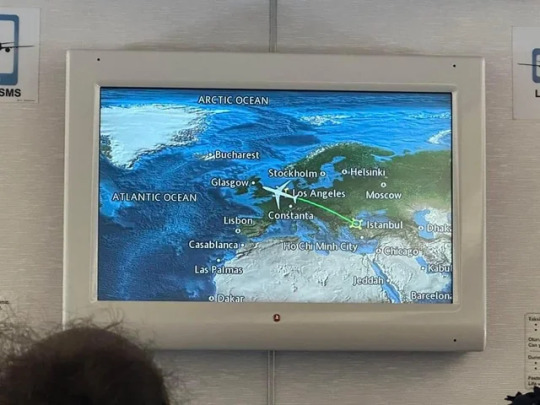
I see Romania is lost again.
Buddy you need to head southeast a ways, bit past Los Angeles if you get to Chicago you've gone too far.
If you get hungry stop over at Ho Chi Minh city get some pho and a ban minh sandwich.
12 notes
·
View notes
Text
[INTERVIEW] Lay - 230327 Harper’s Bazaar Vietnam: “Lay Zhang: I Strive To Show My Fans Another Side Of Me”
"Lay Zhang, also known as Zhang Yixing, is a Chinese singer, rapper, songwriter, actor, and dancer. Born on October 7, 1991, in Changsha, Hunan Province, China, he is best known for being a member of the popular K-pop group EXO.
Lay began his career at SM Entertainment, one of South Korea’s biggest entertainment companies, in 2008. He joined EXO in 2012 and quickly became a fan favorite, known for his smooth vocals and impressive dance skills. During his time with the group, Lay released several hit songs, including Mama, Growl, and Call Me Baby.
In 2015, Lay made his solo debut with the EP Lose Control. The album was a huge success, topping the charts in China and South Korea. Since then, Lay has released several other successful solo albums, including NAMANANA and Honey.
The singer made his acting debut in the Chinese drama To Be a Better Man in 2016. He has since appeared in several TV shows and movies, including The Island, Kung Fu Yoga, and The Golden Eyes. Lay’s performances have earned him critical acclaim and several awards, including the Best Supporting Actor award at the 2017 China-Britain Film Festival for his role in The Founding of an Army.
Lay set aside some time in Los Angeles, during the photoshoot for Harper’s Bazaar Vietnam, to share his latest news with us.
HARPER’S BAZAAR: You’re traveling around the world performing in several countries, what have you enjoyed most about being abroad?
LAY ZHANG: I love meeting the fans and seeing all their beautiful smiles! Feeling the energy they give me when I see them. It gives me a boost of energy that helps me keep going with my projects. Every city is so different, I try to find inspiration wherever I go. Also, I love food. I give myself a little excuse to eat more so I can try the local foods.
HARPER’S BAZAAR: Even more exciting for fans was your tour across Southeast Asia—also, marking your 10th anniversary since debut. From EXO, to an extremely successful solo career and acting, what has kept your drive going through these years, especially during your most challenging moments?
LAY ZHANG: I feel very lucky to have experienced all these things. I am just a normal person that has an unusual job. Because of this luck, I feel it is my responsibility to work harder and go further. I want to make my family, staff, and fans proud.
When I find it challenging, I think about my fans and how they have always supported me and given me energy to keep going through so many years. It makes me happy, and I want to return that happiness to my fans as well, through my performance and projects.
HARPER’S BAZAAR: Watching your solo career excel, especially coming from a larger group, what missions did you give yourself as an artist when you branched off on your own?
LAY ZHANG: To grow and to learn! When you are in a group, you can rely on others to help and support you. I have been trying to figure out how I can do this as one person. It is tiring doing this by myself, but it is a good challenge. I have been able to grow more because as a solo artist, I need to take on more responsibility.
It is important to challenge yourself and not be afraid of growth, even if it is difficult at first. It’s the only way to become a better person and an artist. If it is not challenging, why do it? Getting love and support from my fans as I change and try new concepts as an artist has also helped me to continue going on.
HARPER’S BAZAAR: Do you think that you are your toughest critic?
LAY ZHANG: Yes, but that is because I am honest with myself. I look at what I am good and bad at and see how I can better myself. I see my errors as opportunities to grow and become a better artist. So, if I have a moment to myself, I use it to practice my dancing or singing. It is important to use my time wisely as much as I can.
When I’m talking about professional aspects, music, dance, singing, producing, I am very strict with myself. I want to achieve the most because I feel so grateful to have this job.
HARPER’S BAZAAR: You’ve been releasing a great amount of bilingual music the past few years. Debuting in the United States is tough, at times it can be brutal. How have you handled the pressures and difficulties of breaking into the US music scene?
LAY ZHANG: I think it is very tough because I don’t speak very good English and it is a very different culture from China. There is so much to learn and do all at once. Sometimes I feel overwhelmed. At the same time, it excites me and makes me want to try my very best to succeed. A lot of people laugh at my dreams and goals, I think that’s okay because I’m going to keep going. As long as I have my fans support I will try to do my best, I won’t have any regrets.
HARPER’S BAZAAR: Besides music, you’re always in demand as an actor in China. How difficult is it navigating these two different industries? How do you create balance between the two?
LAY ZHANG: Doing both is not easy, but I always strive to find a balance in my life. As I say, I can’t be a CEO and an artist at the same time. I can’t be a musician and actor at the same time.
Acting can be very fulfilling to me because it gives me an opportunity to find a new part of myself. It offers me an opportunity to be someone else and live a different life for a moment. This also helps me when I get back to my regular life, I appreciate what I have so much, and it makes me got out to do best that I can with everything!
HARPER’S BAZAAR: Presently, do you feel you align more to one than the other?
LAY ZHANG: I think I will always be a musician first. For me, it is hard to beat the feeling after recording a dope track. When you hear your song for the first time in the studio, I can’t help but jump up and down in excitement. Then you start putting the dance and choreography together and it gets to be really fun.
Seeing something that starts out as some snares and kicks and become a full dance move with an MV is priceless. It gets even better when you can perform a song you made on stage with all your lovely fans supporting you. I can’t imagine a life without music, and it really crosses languages and borders. Music is for everyone.
HARPER’S BAZAAR: Any hints into future music, films, and shows?
LAY ZHANG: Well, I don’t think I can say anything for now, many things are happening. However, I’m constantly working a lot to show my fans another side of me. Always trying my best to better my performances and looking for inspiration for my music.
I want to improve my vocals to be even better. It is so important for me to make my fans, team, and family proud. I want to be worthy of their support.
HARPER’S BAZAAR: Looking beyond your current immeasurable success, where do you want to find yourself in the future?
LAY ZHANG: The future seems to be bright. I’m really excited to branch out and try new music and new concepts. I feel more and more clear about where I’m going. While I might be getting older, I feel my mind getting younger and fresher. As long as I can continue to work and perform, many things are possible.
Throughout his career, Lay Zhang has proven himself to be a multi-talented artist with a strong work ethic and a deep commitment to his fans and community. With his infectious energy and captivating performances, he has won the hearts of millions of fans around the world, and his future in the entertainment industry looks brighter than ever.”
Credit: Harper's Bazaar Vietnam.
10 notes
·
View notes